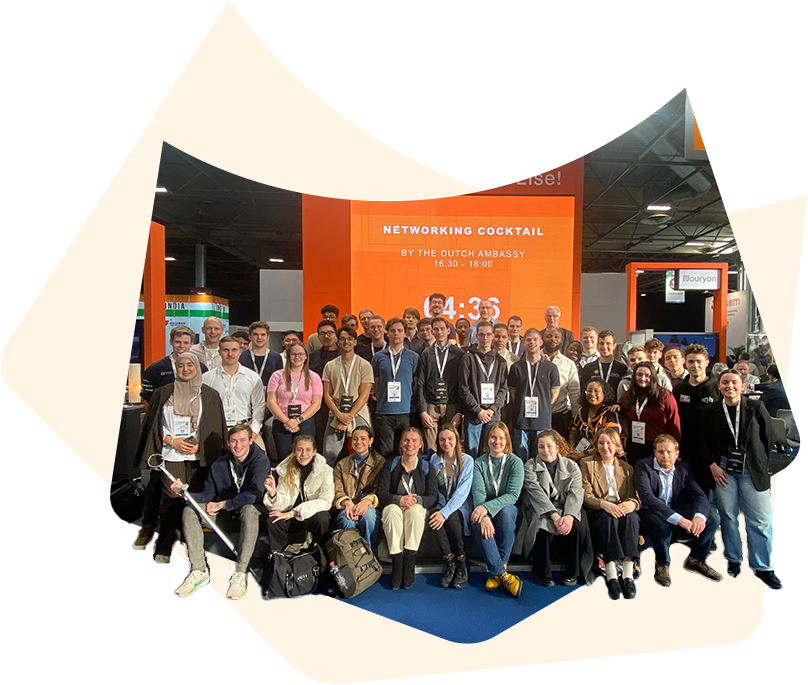Knowledge & Education
A skilled workforce is essential for the growth and competitiveness of the composites sector.
As demand for talent increases, so does the need for education that reflects current technologies and industry needs.
CompositesNL supports collaboration between companies, educational institutions and research organisations.
We contribute to the development of composites-specific training — especially in processing and manufacturing — and help shape practical learning opportunities through joint projects, workshops and the Young Composites community.
University and applied sciences programmes
- InHolland – Lectoraat Composiet
Research and education platform focused on composite behaviour in hybrid structures, applied in construction, infrastructure and civil engineering. - TU Delft – Course “Advanced Design & Optimization of Composite Structures”
University course on the design principles of aerospace composite structures, with a focus on material behaviour and safety margins. - TU Eindhoven – Course “Composite and Lightweight Materials: Design and Analysis”
Master’s course in Mechanical Engineering focused on the analysis and design of composite and lightweight structures. - Fontys – Additive Manufacturing (composiet)
Research group focused on 3D printing of composites, plastics and metals, where students gain hands-on experience with AM technologies. - NHL Stenden – Minor “Composite Design Solutions”
A minor in which students explore manufacturing, materials science and design with composites, including company visits and practical projects. - Saxion – Lectoraat “Lichtgewicht Construeren”
Practice-oriented research and education in thermoplastic composites for SMEs, offering facilities and proof-of-concepts for recycling, automation and process optimisation. - Universiteit Twente – ThermoPlastic Composites Research Center (TPRC)
Research and education centre for thermoplastic composites, established in collaboration with industrial partners such as Boeing and Fokker. - Windesheim & NHL Stenden – HBO Master Polymer Engineering
Two-year master’s programme focused on polymer materials and sustainable production, featuring modules such as Design for Recycling and composite processing in advanced laboratories. - PFH Private University – Master Lightweight Engineering & Composites
German-language (German/Dutch) master’s programme focused on CFRP/GFRP, developed in collaboration with partners such as Airbus and Fraunhofer, and including a management component.
Vocational education programmes
- MBO Luchtvaarttechniek – Composite Repair Technicus
Four-year vocational education programme (EQF level 4) focused on production techniques, inspection and repair of composites for aerospace applications. - ROC van Flevoland – Middenkader Engineering Composieten & Watersportindustrie
Vocational BOL programme in which students learn to plan, design and work with composites in the maritime and aerospace sectors, including an internship component.
Practical courses & training
- VAPRO – Opleiding “Composietverwerken1,2 en 3” (ism CompositesNL)
A practical course for experienced professionals (EQF level 4) who want to specialise in advanced composite processes such as process optimisation and team leadership. - Yonder – Basis Composieten Cursus
A seven-day EQF level 4 course with certification, combining theory and practice — covering epoxy resin, glass and carbon fibre, repair and safety. - Inventas – Cursus Composietconstructies
A four-day course at advanced vocational/applied sciences level (MBO+/HBO) on design, laminate calculations and manufacturability of composite structures, including practical assignments. - Firda – Basis Composieten (e-learning)
Online course focused on repair techniques, damage detection and certification, suitable for self-study. - Scabro – Elementaire Cursus Composieten (Autoschade)
Four-day course on damage repair in the automotive industry, covering repair and inspection techniques, laminate construction and vacuum methods, based on aerospace standards.
